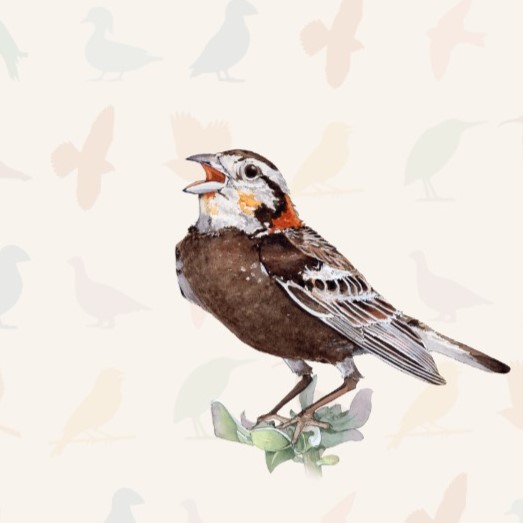
By Kyle Horner, NatureCounts Engagement Coordinator at Birds Canada
The newly released State of Canada’s Birds is a partnership between Birds Canada and Environment and Climate Change Canada. It’s built on over 50 years of bird monitoring data, much of it collected by Citizen Scientists. It combines the data with expert analysis to answer one, simple question:
How are Canada’s birds doing?
As you might imagine, that simple question doesn’t have a simple answer. The State of Canada’s Birds addresses it in two ways: a species account for every bird that regularly occurs in Canada, and a rolled-up summary report. If you’re interested in the big picture, the report is the place to start.
The report builds and expands on similar reports from 2012 and 2019, but the analysis is new and improved. We have data on more species than ever before, and two new groups of birds are introduced for the first time. There is a lot to unpack, but it begins with a plot that may look familiar.
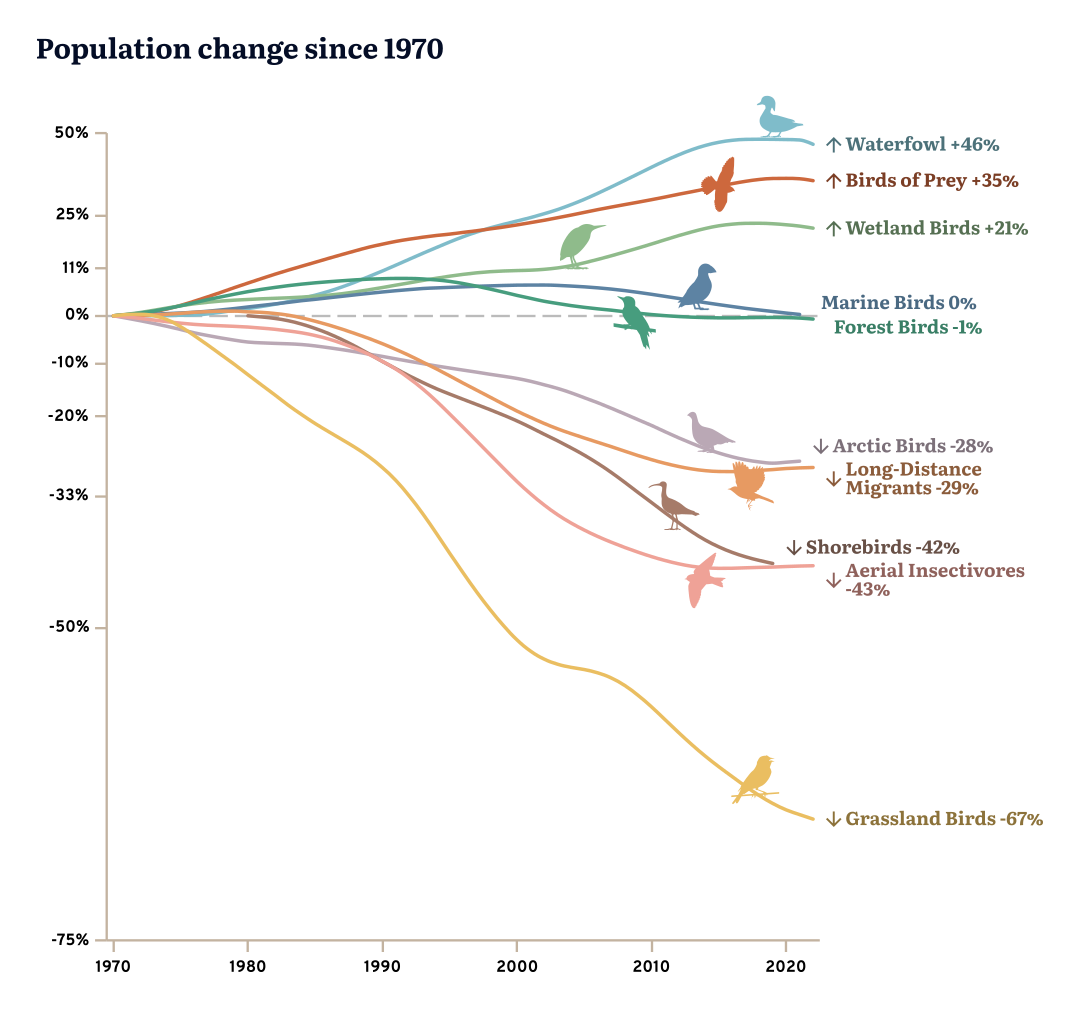
Birds Canada and Environment and Climate Change Canada. 2024. The State of Canada’s Birds Report. Accessed from NatureCounts. DOI: 10.71842/8bab-ks08
Just like its predecessors, this report groups birds based on where and how they live their lives. By studying these groups, we can see what birds may be facing common threats or benefitting from the same conservation action. You can read about each group in detail in the report, but to get you started:
Here are five big stories from The State of Canada’s Birds.
- Grassland birds are in crisis.
Birds that live in Canada’s grasslands have declined by 67% since 1970. Some, like Chestnut-collared and Thick-billed Longspur, have declined by over 95%. There’s no question that these birds are in serious trouble.
The single biggest threat to Canada’s grassland birds is the destruction and degradation of the native grasslands they need. Urgent action to conserve their habitat is needed to save these species.
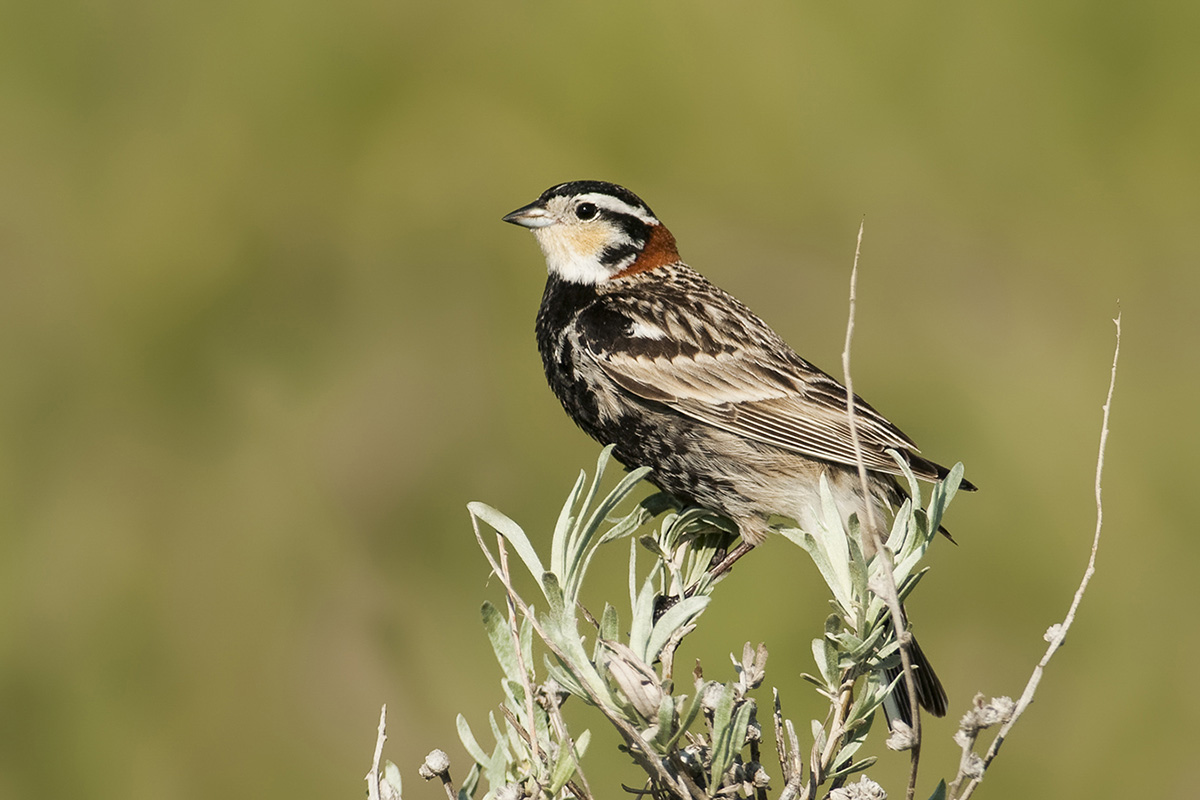
The Chestnut-collared Longspur could be lost from the prairies if declines continue. Photo: May Haga
2. Shorebirds are in steep decline.
Shorebirds in Canada have declined by 42% since 1980. Many nest in the Arctic or the Prairies, two places where climate change is causing problems. In the Arctic, the timing of seasonal events like insect emergence is changing. In the Prairies, both droughts and floods are becoming more frequent and severe.
Most of Canada’s shorebirds migrate, so habitat loss puts them at risk both where they rest and refuel on their journeys, and where they spend their nonbreeding season. Shorebird conservation is a complex problem, and it requires ambitious solutions.
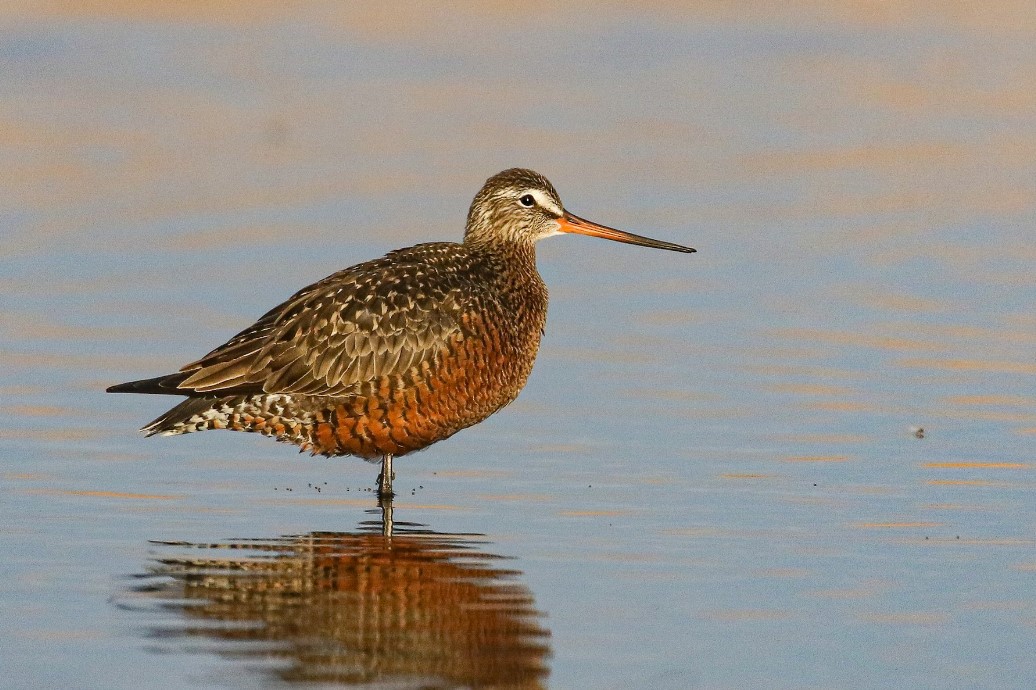
Hudsonian Godwit populations have collapsed with a 93% population decline since 1970. Photo: Ethan Denton
3. Aerial insectivore population declines have stabilized.
Aerial insectivores – birds that hunt for insects in flight – have declined by 43% since 1970, but that decline seems to be leveling off. For some species, populations may even be starting to rise. This is hopeful, but there are still far fewer of these birds than there once were. Continued efforts to understand the decline and recover populations are essential.
4. We know more than ever before.
New for this report, long-distance migrants are presented as a group. These birds migrate primarily to tropical regions, and they have declined by 29% since 1970. Habitat loss threatens them in all parts of their annual cycle, and their long journeys expose them to other risks. International cooperation is key to their conservation.
Arctic birds are also new. Many Arctic species are data deficient, meaning we don’t have enough information to know how they’re doing. Their remote habitats make them difficult to monitor. The data we have suggests they have declined by 28% since 1970. More research is needed for this group.
5. When we take action, we can make a positive impact.
Three groups have increased in population since 1970: waterfowl (46%), birds of prey (35%), and wetland birds (21%). These groups had all declined by the mid-1900s, so their increases are actually recoveries. They show us what is possible when we understand a problem and take action. From banning DDT to save the Peregrine Falcon to conserving wetlands for birds like the Least Bittern, we can have a positive impact on bird populations.
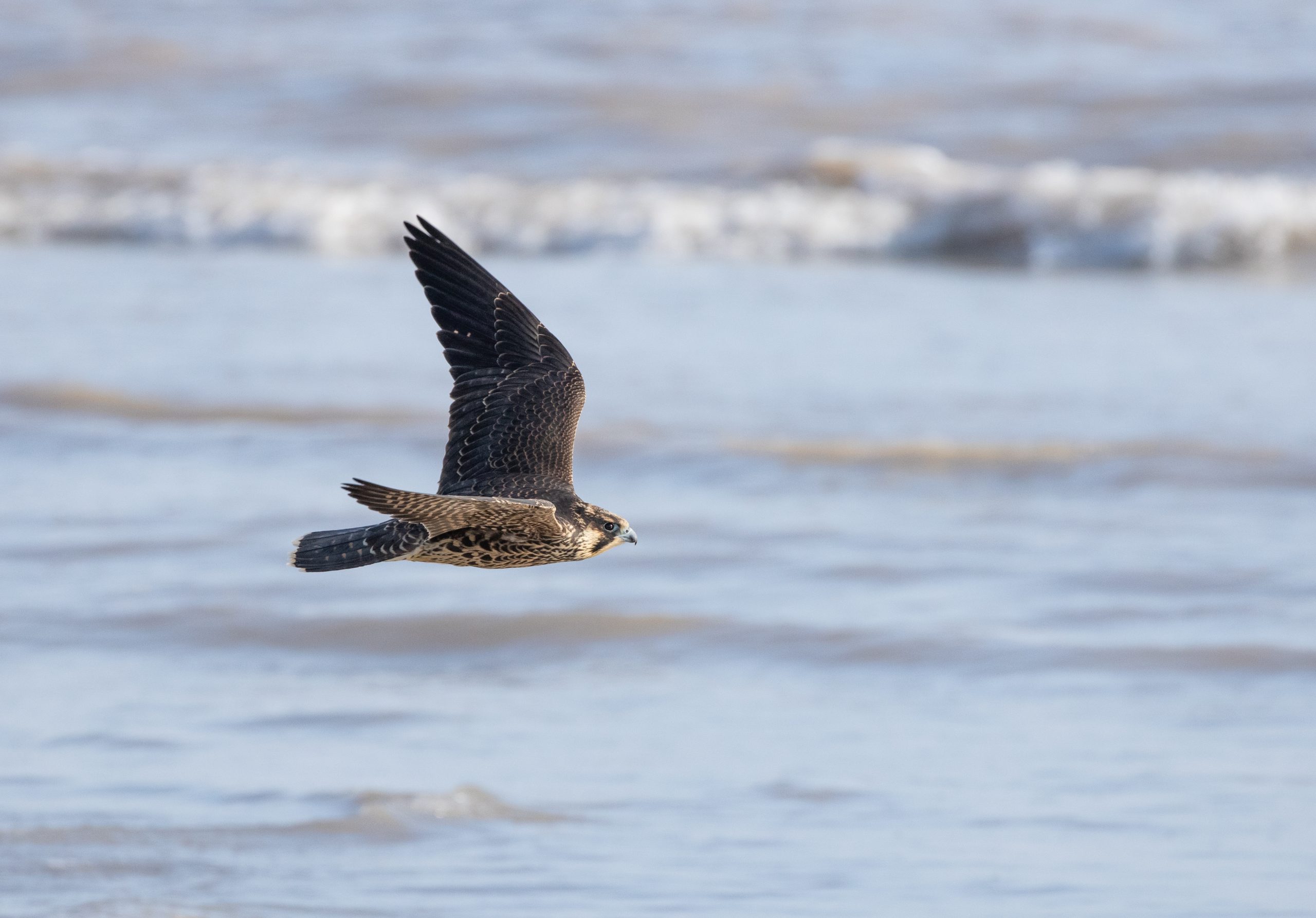
Peregrine Falcon populations have soared by 374% since 1970. Photo: Dan Gornall
You can act to help birds in Canada.
These big stories are important, but it’s also worth noting that nearly 40% of all birds in Canada have declined since 1970. Different birds have declined for different reasons, but threats like habitat loss, climate change, outdoor cats, collisions, and pollution affect nearly all birds that live here.
Canada’s birds need our help. Conserving them will take action by government, industry, conservation groups, and individual people working together. It’s a daunting task, but some efforts are already underway, and there is hope for even the most imperiled species.
Here are seven ways you can help birds today:
- Create and protect habitat. Plant native plants, reduce pesticide use, and make windows safer for birds.
- Keep cats indoors, or provide outside time with a leash or catio. Leash dogs in sensitive areas where birds may be resting or nesting.
- Help fight climate change. Use less fossil fuel, waste less food, use less energy at home, and eat less meat.
- Volunteer for conservation. Take part in Citizen Science. Participate in tree plantings, invasive species control, habitat creation and restoration projects.
- Choose bird-friendly products, if you are able. Look for sustainable products like organic produce, Smithsonian Bird Friendly coffee, FSC certified paper products, Ocean Wise recommended seafood, and Canadian grass-fed beef.
- Buy less, and produce less waste. Use fewer single-use plastics, dispose of garbage and recycling properly, and help with clean-ups.
- Learn more about birds and advocate for bird-friendly initiatives, policies, and conservation action.
You can find more about these and other actions for birds in the State of Canada’s Birds summary report. You can also learn about some exciting initiatives that are underway to help birds on a larger scale. Together we can ensure a bright future for every bird that calls Canada home.
Donate to Birds Canada
You can help save birds and protect habitats with your donation today! Your gift will go to work providing critical help to species of highest concern, monitoring bird populations, supporting our volunteer Citizen Scientists, and more! Give today!


